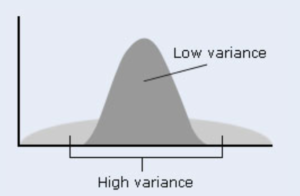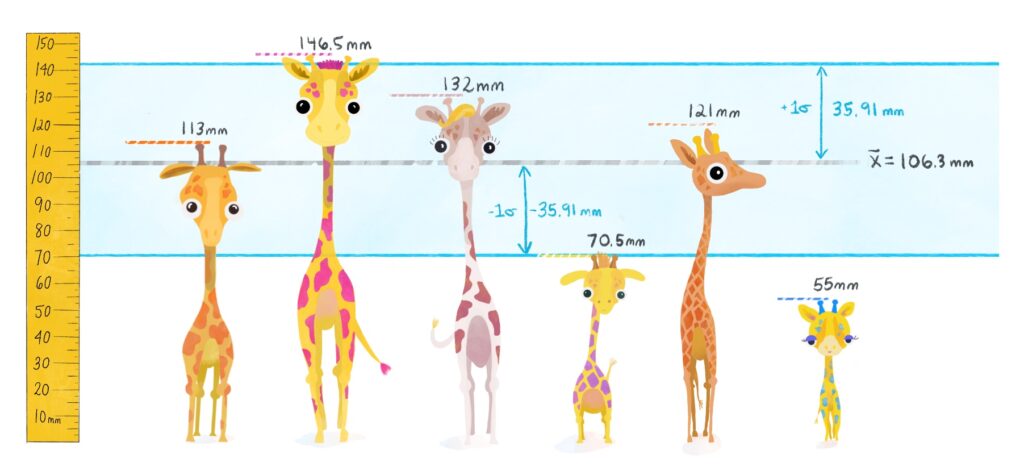What Is Variance In Statistics?
Table Of Contents:
- What Is Variance?
- Examples Of Variance.
- How To Calculate Variance?
- Advantages & Disadvantages Of Variance.
- Why Does Variance Matters?
(1) What Is Variance ?
- Variance refers to how the individual data points vary from each other in a sample dataset.
- It is the statistical measurement of the spread between numbers in a data set.
- More specifically, variance measures how far each number in the set is from the mean (average), and thus from every other number in the set.
- Variance is often depicted by this symbol: σ2.

(2) Examples Of Variance ?
Example-1
- When you asked to find out the average height of people in India.
- If you collect height of all age groups staring from children to man and women, you will see there will be a lot of difference in heights.
- Because children will have lesser height compared to grownup man.
- Hence here the variance will be higher.
- If you collect height of a particular age group suppose, 30 to 35 then you will see that there will be less difference in height.
- Hence the variance will be lower in this case.

(3) How To Calculate Variance ?
- Variance is calculated by using the following formula:

- It is calculated by taking the differences between each number in the data set and the mean, then squaring the differences to make them positive, and finally dividing the sum of the squares by the number of values in the data set.
(4) Advantages & Disadvantages Of Variance ?
Advantages:
- It considers individual data points and calculates their differences unlike quartiles which put data points into different quarter and finds difference in each quarter.
- The advantage of variance is that it treats all deviations from the mean as the same regardless of their direction.
- The squared deviations cannot sum to zero and give the appearance of no variability at all in the data.
Disadvantages:
- One drawback to variance, though, is that it gives added weight to outliers.
- These are the numbers far from the mean.
- Squaring these numbers can skew the data.
- Another pitfall of using variance is that it is not easily interpreted.
- Users often employ it primarily to take the square root of its value, which indicates the standard deviation of the data.
(5) Why Does Variance Matters?
- Variance matters for two main reasons:
- Parametric statistical tests are sensitive to variance.
- Comparing the variance of samples helps you assess group differences.
(a) Homogeneity of variance in statistical tests
- Variance is important to consider before performing parametric tests.
- These tests require equal or similar variances, also called homogeneity of variance or homoscedasticity, when comparing different samples.
- Uneven variances between samples result in biased and skewed test results.
- If you have uneven variances across samples, non-parametric tests are more appropriate.
(b) Using variance to assess group differences
- Statistical tests like variance tests or the analysis of variance (ANOVA) use sample variance to assess group differences.
- They use the variances of the samples to assess whether the populations they come from differ from each other.

